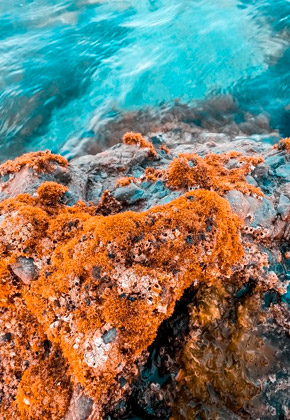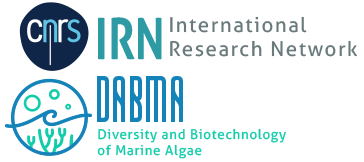Description of the project
-
Diversity and Biotechnology of Marine Algae > Description of the project


About Project
Marine algae - from ecosystems to biotechnology
Marine algae provide important ecosystem services. Globally, these organisms are responsible for the production of about half of the atmospheric oxygen generated each year, the majority of this production being generated by planktonic micro-algae. Planktonic micro-algae also play key roles in other global geochemical cycles, including the carbon cycle. In coastal regions, brown and red macro-algae are the dominant species, where they support a broad range of other marine organisms. The macro-algae that grow in coastal regions also represent an economic resource that is increasingly being exploited and domesticated in the partner countries. Both planktonic and coastal algal populations are affected by global climate change and related processes such as ocean acidification. Moreover, coastal algae are affected by additional anthropogenic influences such as pollution, biological invasions and coastal urbanization. Despite the global importance of algae and the potential consequences of modifications to algal-based biosystems, we still have only a limited understanding of how these systems function, their resilience to modifications to their environments and their potential for economic development.
Blood Resources
Excepteur sint ocecat pro dent sunt in culpa qui.
The DABMA research project
The international research network Diversity and Biotechnology of Marine Algae brings together laboratories working on several different aspects of macro- and micro-algal biology, including diversity, evolution, ecology, population biology, taxonomy, genomics, genetics, biochemistry, physiology, pathology and biotechnology. These diverse expertise are being combined to address four specific domains, each corresponding to a project work package.
The partners of the DABMA project are amassing a large amount of information about algal biodiversity and population structure in both open water and coastal environments at multiple geographical sites. These data include, for example, studies of the abundance and diversity of pico- and nano-phytoplankton in the south west Atlantic and in the Antarctic and, for macroalgae, study of species diversity and biogeographic patterns and analyses of the genetic structure and resources of various species of major ecological and economical importance.
Biological features such as life cycle structure, reproductive strategy and species structure of populations play important roles in determining the structure and resilience of algal populations. Work on this topic within the DABMA network ranges from population-level studies to work with model organisms aimed at identifying key regulatory genes.
This work package is investigating how micro- and macro-algae respond to changes in their environment (abiotic stresses) and to challenges from other organisms (biotic stresses). The research combines fieldwork with laboratory-based, molecular approaches to provide a multi-level view of these interactions extending from ecosystems, through organisms to the molecular level.
This work package is developing tools for the biotechnological exploitation of algae, including biobanking of important strains and the application of breeding methodologies. Genomic resources, including complete, annotated genome assemblies, are another important feature, potentially providing the means to intelligently design methodologies for algal culture and efficient and high value exploitation of algal biomass.
